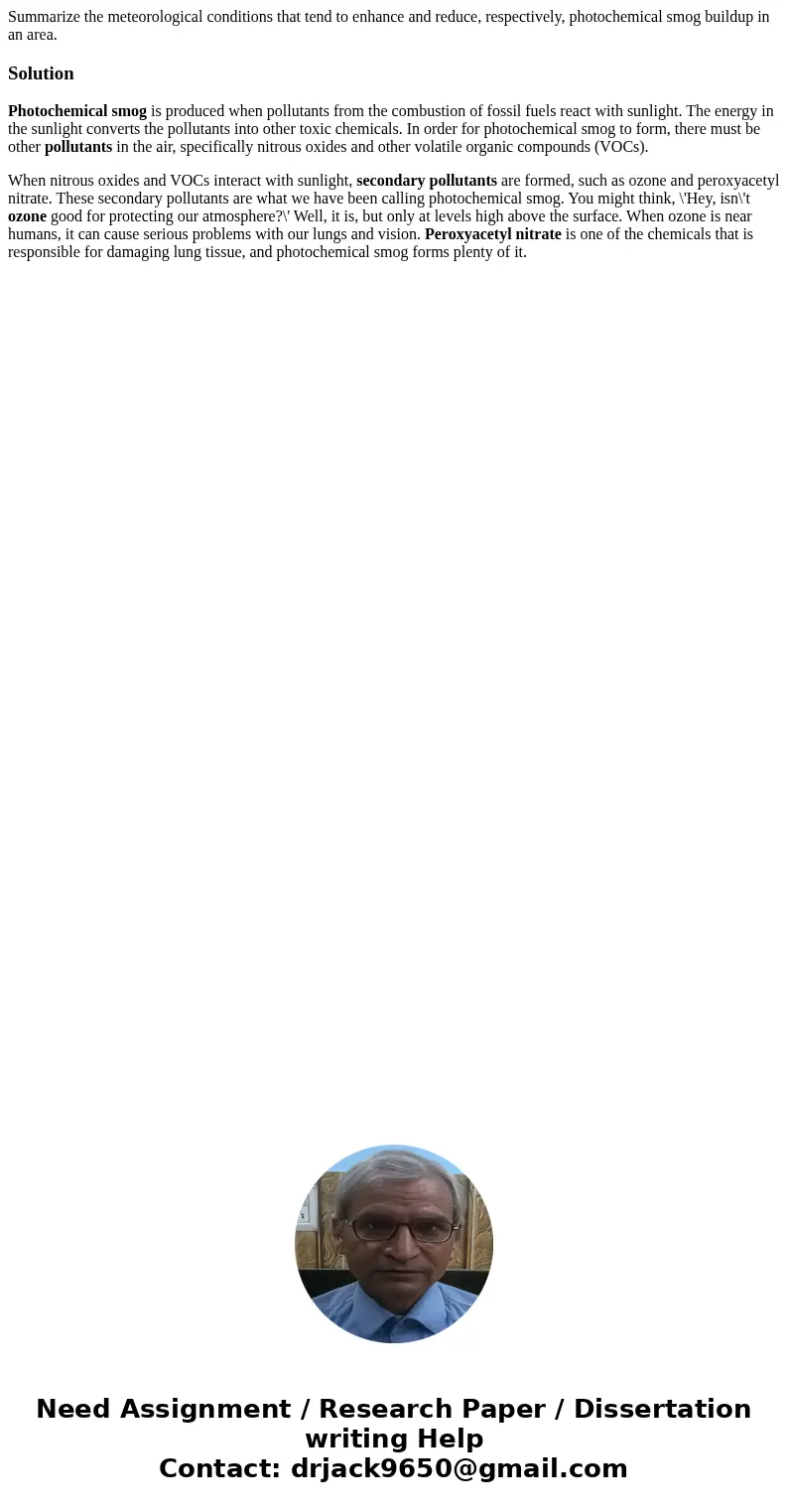Summarize the meteorological conditions that tend to enhance
Summarize the meteorological conditions that tend to enhance and reduce, respectively, photochemical smog buildup in an area.
Solution
Photochemical smog is produced when pollutants from the combustion of fossil fuels react with sunlight. The energy in the sunlight converts the pollutants into other toxic chemicals. In order for photochemical smog to form, there must be other pollutants in the air, specifically nitrous oxides and other volatile organic compounds (VOCs).
When nitrous oxides and VOCs interact with sunlight, secondary pollutants are formed, such as ozone and peroxyacetyl nitrate. These secondary pollutants are what we have been calling photochemical smog. You might think, \'Hey, isn\'t ozone good for protecting our atmosphere?\' Well, it is, but only at levels high above the surface. When ozone is near humans, it can cause serious problems with our lungs and vision. Peroxyacetyl nitrate is one of the chemicals that is responsible for damaging lung tissue, and photochemical smog forms plenty of it.

 Homework Sourse
Homework Sourse